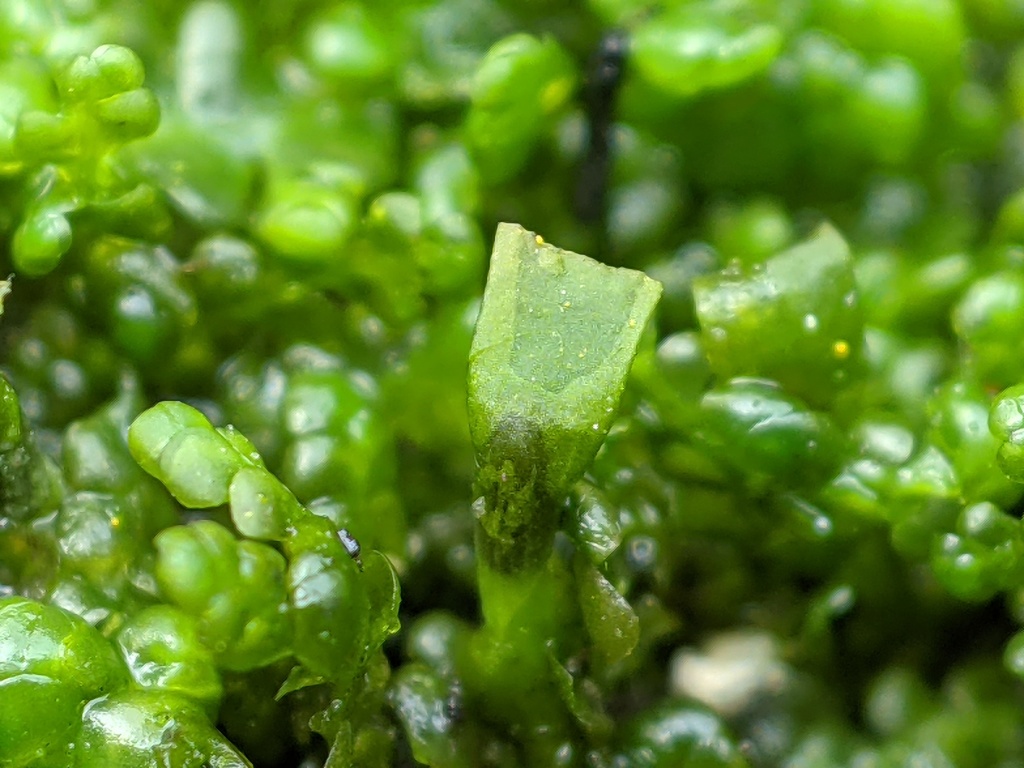Radulaceae
Epiphytic, epiphyllous or lithophytic, dioicous or rarely monoicous (not in Victoria). Asexual reproduction by discoid gemmae on margins of leaves (not in Victoria) or by caducous leaves (not in Victoria) or branches (not in Victoria). Stem irregularly or regularly pinnately to bipinnately branching, with two ranks of lateral leaves and no underleaves, sometimes with branches comprised entirely of small leaves with lobule usually occupying around half or more of lobe area; branches emerging from main stem near an unmodified lateral leaf, without a ring of tissue or ring of small leaf-like appendages at base. Lateral leaves incubous, with a smaller abaxial lobule; main lobe not lobed, ovate to ovate-falcate, reniform or orbicular, entire or rarely dentate (not in Victoria), rounded or rarely apiculate (not in Victoria) or acute (not in Victoria) at apex; lobule smaller than lobe, around half lobe area in microphyllous branches when present, not lobed, quadrate, oblong or rhomboid, entire, slightly inflated near base otherwise appressed to main lobe, without a stylus. Leaf cells circular or quadrate to hexagonal or rectangular, smooth or papillose (not in Victoria), thin- to thick-walled (not in Victoria), without or with small to large trigones, with 1–3 smooth (not in Victoria), granular or botryoidal ovoid to ellipsoid oil bodies. Rhizoids when present in fascicles from leaf lobules, without internal peg-like thickenings, hyaline. Androecia on lateral branch, rarely on leading stem (not in Victoria), with 2–numerous bracts, each covering 1–3 antheridia. Sporophyte terminating a leading branch or on lateral branch, surrounded by shoot calyptra and perianth, with or without a perigynium; perianth tubular at base, toward apex 2-keeled, dorsiventrally compressed, with mouth truncate, resembling a scraper; apex margins entire or ciliate (not in Victoria). Seta moderately elongate. Capsules globose, ellipsoid or cylindric, bistratose, dehiscing by 4 valves, barely emergent above perianth; elaters present, usually bispiral, rarely trispiral. Spores globose, papillate, often precociously germinating.
One genus with around 250 species (Promma et al. 2018) throughout the world except Antarctica; four species in Victoria.
Promma, C., Zhang, L.-N., Shu, L., Chantanaorrapini, S., Renner, M.A.M. & Zhu, R.-L. (2018). Radula deflexilobula (Radulaceae, Marchantiophyta) from Thailand, a new species based on morphological and molecular data. Cryptogamie, Bryologie 39: 481–497.
 Spinning
Spinning